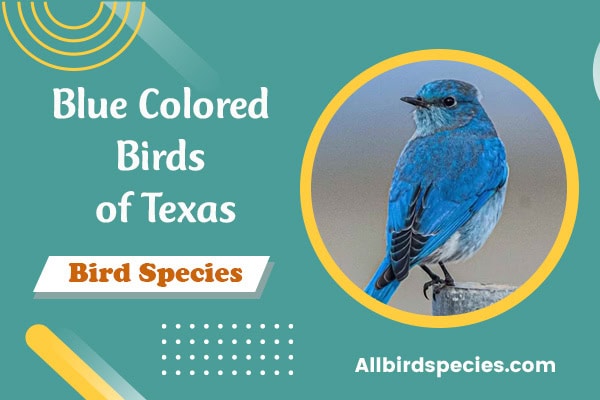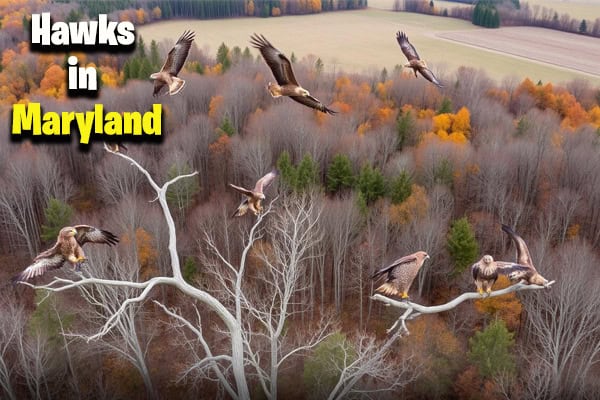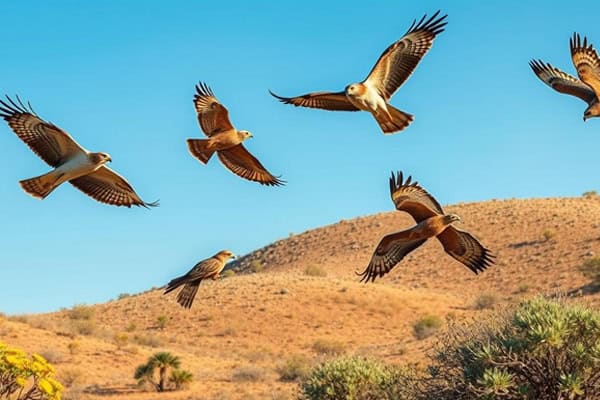Top 7 Brown and White Birds (WIth Photos)
Bird lovers and bird experts enjoy watching birds in their natural habitats. The brown and white birds catch the eye with their beautiful feathers. These feathers are unique. But why are these birds so fascinating? We will explore seven stunning brown and white birds. They bring beauty to forests, fields, and skies everywhere.
What is it that makes these birds so interesting to watch? Let’s learn about the special features of the bald eagle, Eurasian tree sparrow, downy woodpecker, American kestrel, osprey, brown-headed cowbird, and eared grebe. We’ll see what makes them shine in the world of birds.
The Majestic Bald Eagle
The Bald Eagle is a proud symbol of the U.S. It stands out with a white head and tail. Yet, it has a dark brown body and wings. This eagle, known as Haliaeetus leucocephalus, lives near big water bodies.
It lives in areas with lots of food and tall, old trees for nesting.

Habitats & Distribution
You can find Bald Eagles near big water areas like lakes or coasts. They have a 7.5 feet wingspan and like to eat fish. The Bald Eagle is now safe from being too few. This is thanks to people making sure they could grow in number again.
Interesting Facts
Bald Eagles are among North America’s biggest birds. They have bigger wings than the Great Blue Heron. It takes about five years for a young Bald Eagle to get its full, adult look, including a white head.
Bald Eagles see very well. They can see things up to 8 times clearer than we can.
These birds can live up to 25 years in the wild. They use warm air, or thermals, to fly without flapping their wings much. Bald Eagles usually have babies in February or March in places like the Midwest. They lay up to 3 eggs that are only a few ounces big.
The parent eagles take turns keeping the eggs safe and warm. After 10-14 weeks, the babies are ready to leave the nest.
Charming Eurasian Tree Sparrow
The Eurasian Tree Sparrow is a lovely little bird. It has a brown back and a white cheek with a black spot. These eurasian tree sparrows are often seen around calm countryside areas. They move quickly, visiting gardens and becoming a favorite for nature lovers.
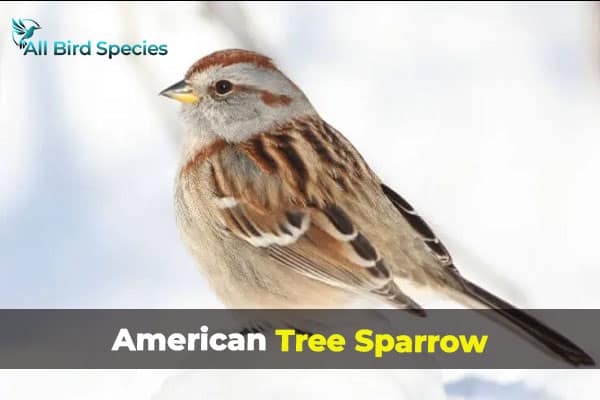
Habitats & Distribution
These birds live in places like open woodlands and farmlands. They can even be found in cities. While they are not as common in North America as the House Sparrow, they have been spreading to new areas like Iowa over the last 30 years. Eurasia, though, is where they’re most found. There, scientists have identified many subspecies, somewhere between 9 to 33.
| Habitat | Distribution |
|---|---|
| Open woodlands, farmlands, urban areas | Primarily concentrated in St. Louis, Missouri, and slowly expanding to nearby regions in the Midwest |
Downy Woodpecker: The Smallest North American Woodpecker
The Downy Woodpecker is the tiniest woodpecker in North America. It’s just a bit bigger than chickadees and nuthatches. These little birds have white bellies and black wings with white spots. You can tell the males by the touch of red on their heads.

Downy woodpeckers are often seen at backyard feeders and scaling tree trunks. They’re looking for their preferred meal – insects. They’re quite adaptable, some even making their nests in buildings. This shows how they can live near people very well.
The record for the oldest Downy Woodpecker stands at nearly 12 years. This shows they can live a long life. In winter, they join other bird species. This helps them find food and stay safe from predators.
| Characteristic | Details |
|---|---|
| Size | Downy Woodpeckers are about two-thirds the size of a Hairy Woodpecker |
| Coloration | The Downy Woodpecker varies in color, with Pacific Northwest birds looking darker |
| Male Identification | You can spot males by the red patch on the back of their head |
| Habitat | They live in open woods, backyards, parks, and orchards |
| Parental Care | Both parents feed their young for up to 3 weeks after they fly from the nest |
| Behavior | They drum on trees to claim territory, find a mate, or stay in touch with one |
The Downy Woodpecker’s ability to adapt and its interesting habits make it a delightful bird species to study in North America.
American Kestrel: The Sparrow Hawk
The American Kestrel is often called the sparrow hawk. It’s North America’s smallest falcon. This bird is known for its beautiful slate-blue head and wings up against a brown back and tail. Look for them on wires or hunting in open fields as you drive through the countryside.
This falcon is the tiniest one in the U.S. and Canada. It measures between 22 to 31 cm (8.7 to 12.2 in) long and has a wingspan of 51–61 cm (20–24 in). The males are lighter, weighing 80–143 g (2.8–5.0 oz). Females, on the other hand, weigh 86–165 g (3.0–5.8 oz).
There are 17 recognized subspecies of this bird. They are spread across varied environments in the Americas. Each one looks a bit different. Differences in their physical features and the sounds they make set them apart. For instance, male kestrels in the north have deep blue wings. They also have distinct black marks on their faces. But those in the south are lighter. They have more white on their heads and chests.

Even though the American Kestrel is common in North America, its numbers are going down. This is especially true in the Northeast. The reasons for this decline include the loss of where they live, fewer places to nest, and pesticides harming their food. To help protect them, people are putting up nest boxes. They are also working on preserving their habitats and reducing the use of harmful chemicals.
brown and white birds: The Fish-Eating Osprey
The Osprey (Pandion haliaetus) is a fish-eating hawk. It’s known for its striking white and brown feathers. You can see these birds soaring high over water. Then, they plunge into the water with their feet-first to catch fish.
Ospreys live near rivers, lakes, and the sea. They are a treat for people who love nature and bird-watching.
Habitats & Distribution
The Osprey is found almost everywhere except Antarctica. These brown and white birds love to live near water. They can be in salt marshes, estuaries, and more.
Ospreys have huge wings that can span up to 180 cm (71 in). This helps them fly elegantly over water where they hunt for fish.
Check Our Previous Articles:
Brown-Headed Cowbird: The Brood Parasite
The Brown-headed Cowbird stands out due to its brood-parasitic behavior. It has a notable glistening brown head atop a dark body. These birds are often seen in open areas and fields throughout the United States. They are known to lay their eggs in the nests of over 220 North American bird species. The Brown-headed Cowbirds then have the host parents raise their chicks.
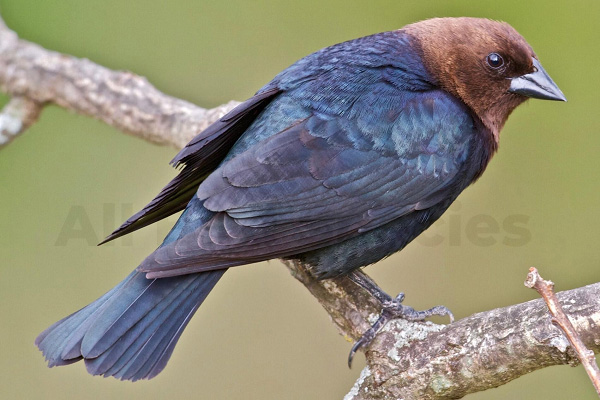
A key point is that most female Brown-headed Cowbirds focus on a certain host species, as shown by genetic studies. For example, the Yellow Warbler recognizes cowbird eggs and rejects them. Some birds discard the cowbird eggs, while others might build a fresh nest over them. This is because cowbird eggs hatch faster than those of other birds, gaining an early advantage in feeding.
Their actions are indeed unique, but Brown-headed Cowbirds are protected by the Migratory Bird Treaty Act. They are a native species of the United States, thriving in a range of open environments. Although they have affected certain rare bird species, such as the Kirtland’s Warbler, steps like trapping cowbirds are in place. These actions aim to safeguard the at-risk birds from cowbird parasitism.


